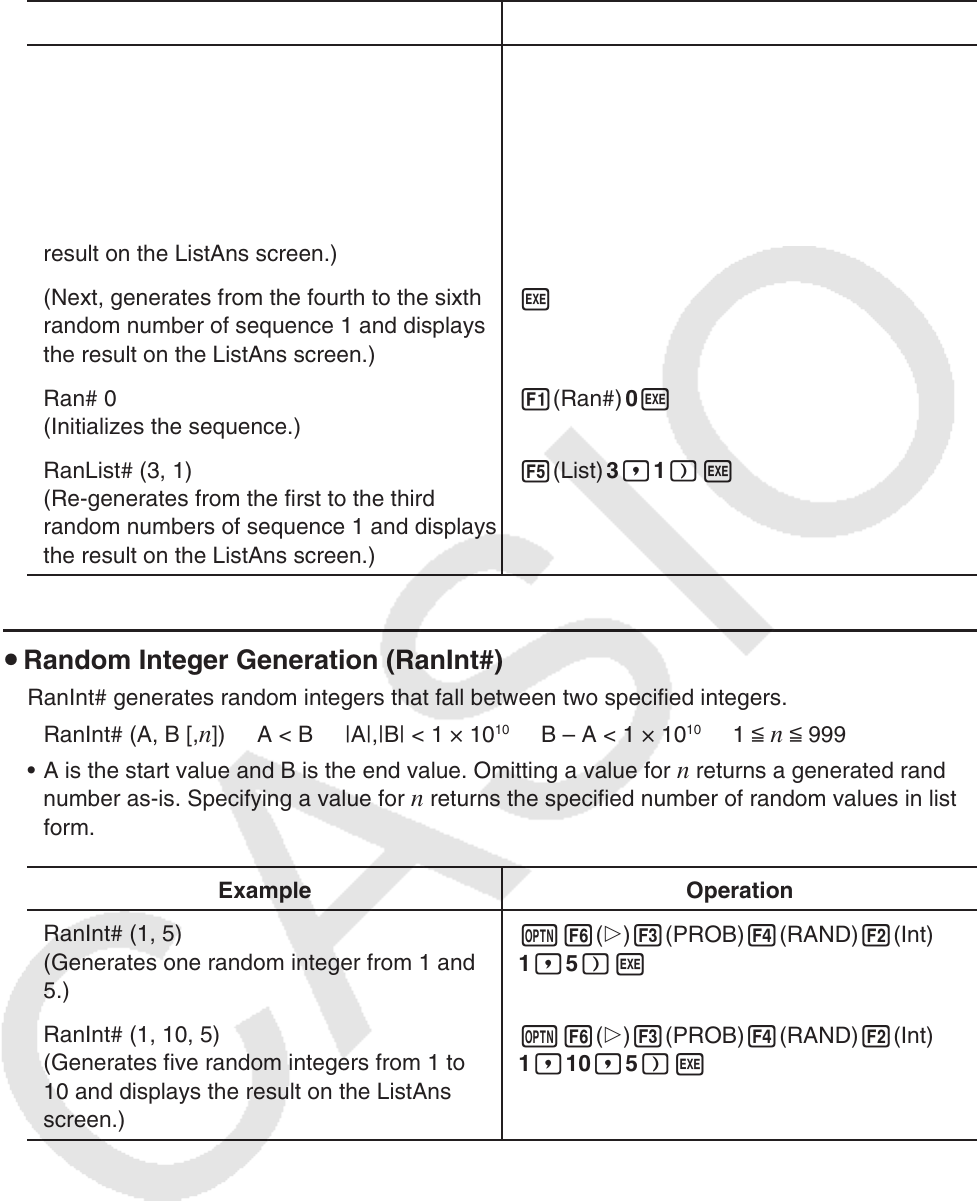User Manual
Table Of Contents
- Contents
- Getting Acquainted — Read This First!
- Chapter 1 Basic Operation
- Chapter 2 Manual Calculations
- 1. Basic Calculations
- 2. Special Functions
- 3. Specifying the Angle Unit and Display Format
- 4. Function Calculations
- 5. Numerical Calculations
- 6. Complex Number Calculations
- 7. Binary, Octal, Decimal, and Hexadecimal Calculations with Integers
- 8. Matrix Calculations
- 9. Vector Calculations
- 10. Metric Conversion Calculations
- Chapter 3 List Function
- Chapter 4 Equation Calculations
- Chapter 5 Graphing
- 1. Sample Graphs
- 2. Controlling What Appears on a Graph Screen
- 3. Drawing a Graph
- 4. Saving and Recalling Graph Screen Contents
- 5. Drawing Two Graphs on the Same Screen
- 6. Manual Graphing
- 7. Using Tables
- 8. Modifying a Graph
- 9. Dynamic Graphing
- 10. Graphing a Recursion Formula
- 11. Graphing a Conic Section
- 12. Drawing Dots, Lines, and Text on the Graph Screen (Sketch)
- 13. Function Analysis
- Chapter 6 Statistical Graphs and Calculations
- 1. Before Performing Statistical Calculations
- 2. Calculating and Graphing Single-Variable Statistical Data
- 3. Calculating and Graphing Paired-Variable Statistical Data (Curve Fitting)
- 4. Performing Statistical Calculations
- 5. Tests
- 6. Confidence Interval
- 7. Distribution
- 8. Input and Output Terms of Tests, Confidence Interval, and Distribution
- 9. Statistic Formula
- Chapter 7 Financial Calculation
- Chapter 8 Programming
- Chapter 9 Spreadsheet
- Chapter 10 eActivity
- Chapter 11 Memory Manager
- Chapter 12 System Manager
- Chapter 13 Data Communication
- Chapter 14 Geometry
- Chapter 15 Picture Plot
- Chapter 16 3D Graph Function
- Appendix
- Examination Mode
- E-CON4 Application (English)
- 1. E-CON4 Mode Overview
- 2. Sampling Screen
- 3. Auto Sensor Detection (CLAB Only)
- 4. Selecting a Sensor
- 5. Configuring the Sampling Setup
- 6. Performing Auto Sensor Calibration and Zero Adjustment
- 7. Using a Custom Probe
- 8. Using Setup Memory
- 9. Starting a Sampling Operation
- 10. Using Sample Data Memory
- 11. Using the Graph Analysis Tools to Graph Data
- 12. Graph Analysis Tool Graph Screen Operations
- 13. Calling E-CON4 Functions from an eActivity

2-19
RanList# Examples
Example Operation
RanList# (4)
(Generates four random numbers and
displays the result on the ListAns screen.)
K6(g)3(PROB)4(RAND)5(List)
4)w
RanList# (3, 1)
(Generates from the first to the third random
numbers of sequence 1 and displays the
result on the ListAns screen.)
K6(g)3(PROB)4(RAND)5(List)
3,1)w
(Next, generates from the fourth to the sixth
random number of sequence 1 and displays
the result on the ListAns screen.)
w
Ran# 0
(Initializes the sequence.)
1(Ran#) 0w
RanList# (3, 1)
(Re-generates from the first to the third
random numbers of sequence 1 and displays
the result on the ListAns screen.)
5(List) 3,1)w
u Random Integer Generation (RanInt#)
RanInt# generates random integers that fall between two specified integers.
RanInt# (A, B [,
n]) A < B |A|,|B| < 1 × 10
10
B – A < 1 × 10
10
1 < n < 999
• A is the start value and B is the end value. Omitting a value for
n returns a generated random
number as-is. Specifying a value for n returns the specified number of random values in list
form.
Example Operation
RanInt# (1, 5)
(Generates one random integer from 1 and
5.)
K6(g)3(PROB)4(RAND)2(Int)
1,5)w
RanInt# (1, 10, 5)
(Generates five random integers from 1 to
10 and displays the result on the ListAns
screen.)
K6(g)3(PROB)4(RAND)2(Int)
1,10,5)w










